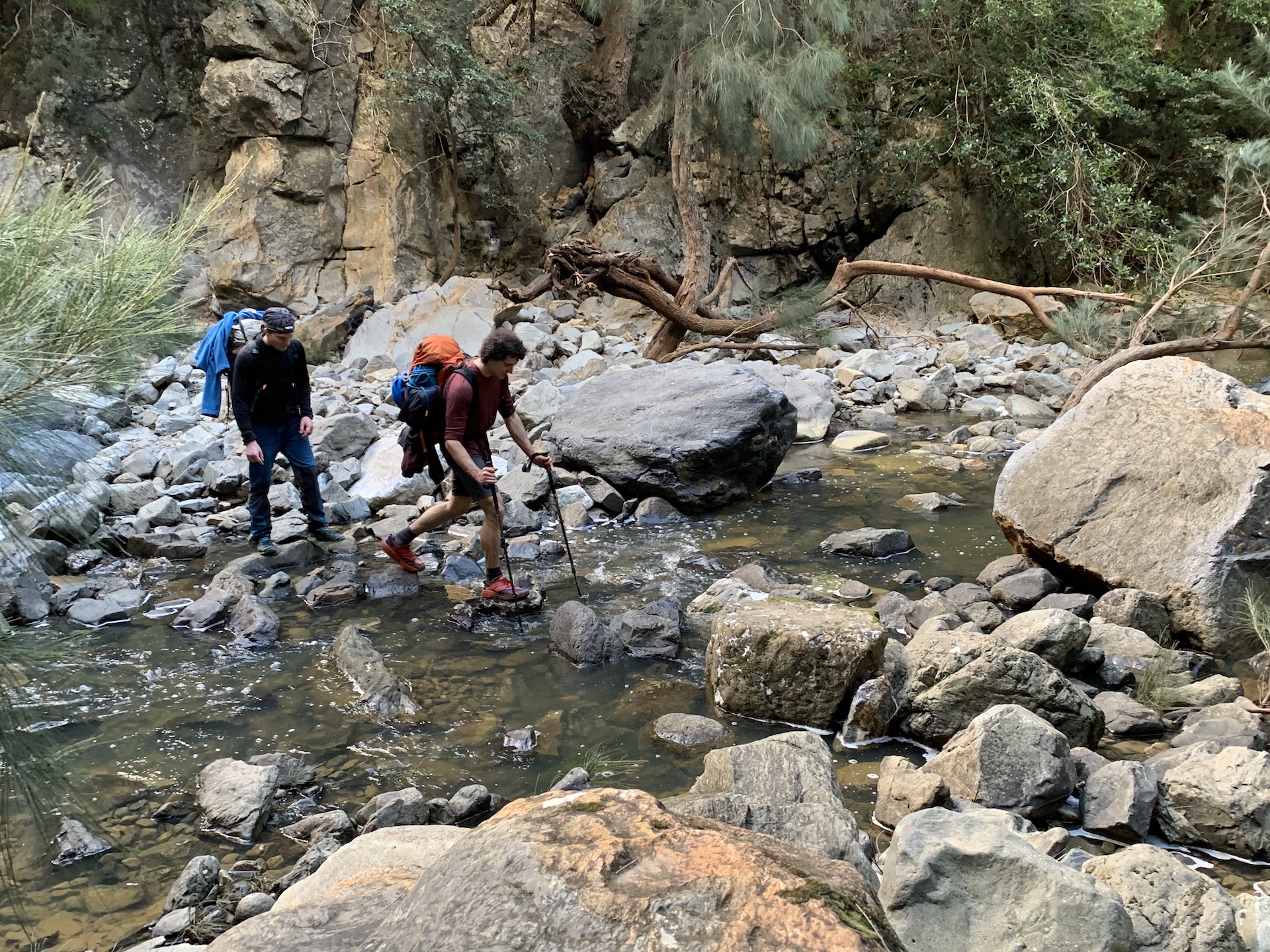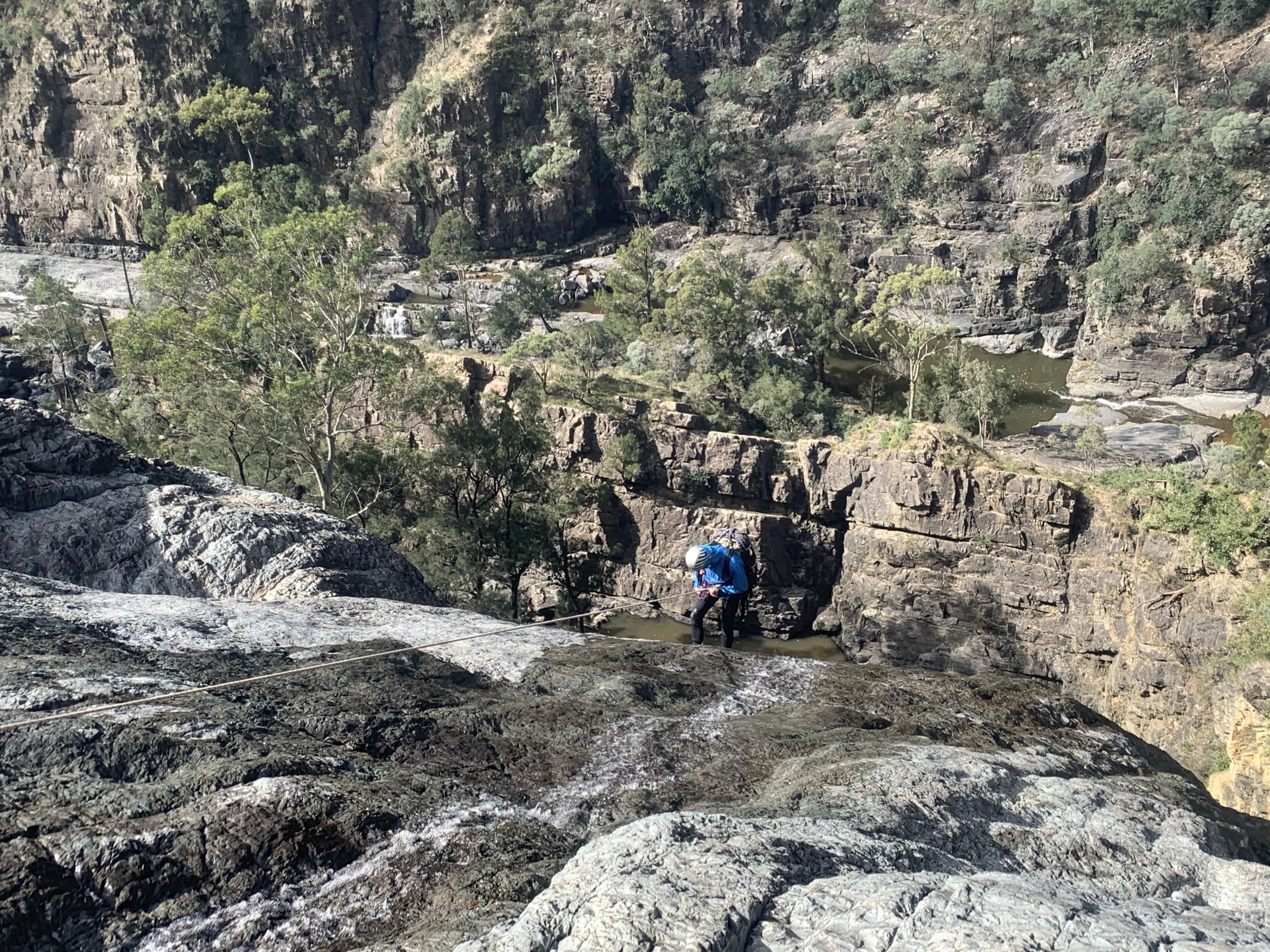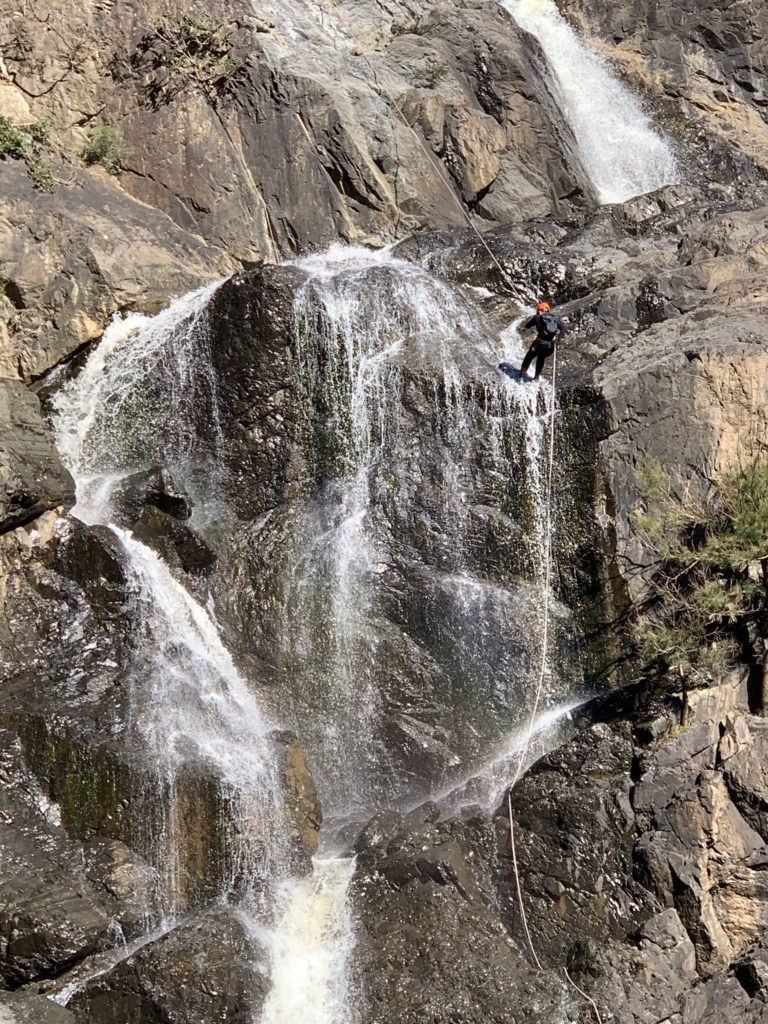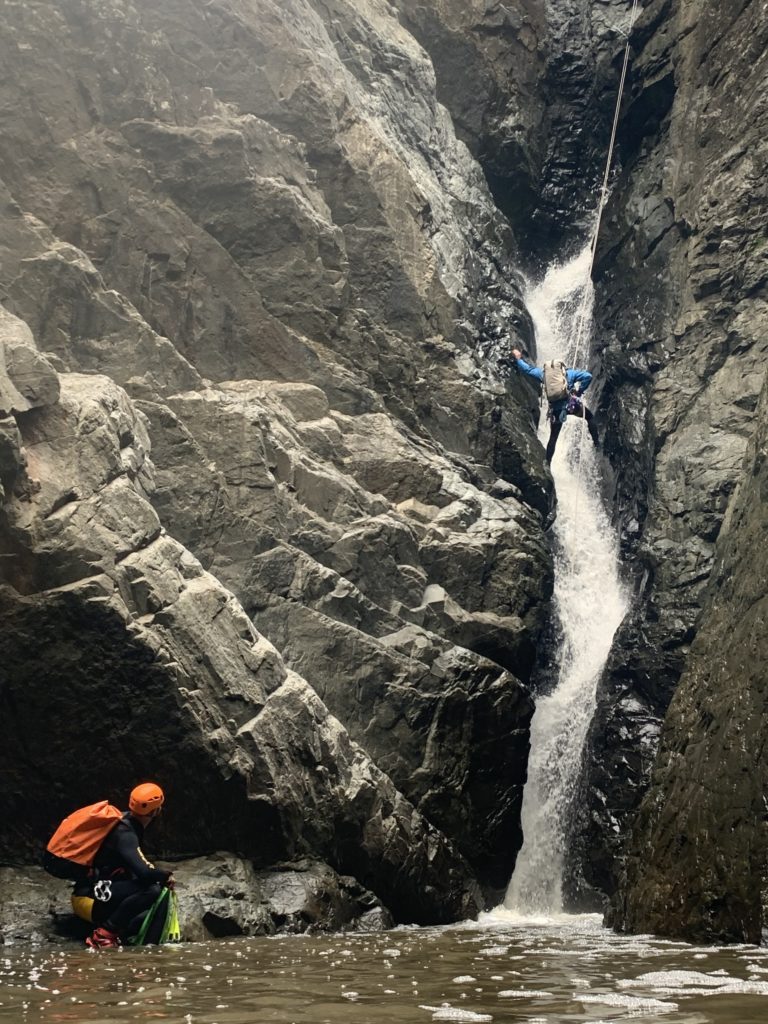Canyoning in Bungonia
Bungonia National Park, NSW
It’s generally considered that the Greater Blue Mountains World Heritage Area in NSW is the epicenter of Australia’s canyoning scene, and while that’s probably true, Bungonia National Park provides an easy alternative for Sydneysiders wishing to change it up for a weekend. The gorges that cut through the plateau are wide, limestone features, very different from the narrow sandstone slots more commonly found in the Wollemi and Grose wildernesses.
At what cost comes this canyoning wonderland? Very little, actually. The access road is well-maintained tarmac, the campground is cheap and well-appointed, and it’s really not that far to drive for the weekend. What are you waiting for?
-
Location
Bungonia National Park, NSW
-
Distance
N/A
-
Duration
1-multi
-
When to go
Year Round
-
Sleeping
Accomodation
-
Permit required
No - Park entry fees apply
Highlights
- Spring Creek – the perfect serving of abseils, jumps, swims and even a couple of slides.
- Bungonia Creek – a short walk from the campsite and suddenly you’re in the thick of it.
- Jerrara Creek – the fun starts at the first anchor and builds to the magnificent Jerrara Falls.
- Long Gully – a drier option, great for getting your fix in the colder months.
- Fordham Canyon – Way over on the opposite side of the Shoalhaven, this rarely-run canyon is only for the determined.
History
The plateau was first established as a water reserve in 1872 to protect the valuable resource of the Shoalhaven River, but it took another hundred years to be upgraded to the status of State Conservation Area. Not long after that, a 15km2 portion of the SCA achieved national park status thanks to its unique geology, particularly the limestone caves and deep-cut gorges. While the golden age of canyon discovery in the Blue Mountains was the 1970s, the first descents of the Bungonia canyons are not documented.
When to go
Unlike the Blue Mountains’ slots, the open gorges of Bungonia don’t particularly benefit from the warmth of the summer months. The lack of creek flow, combined with the presence of an army of wild goats in the park, means the deep pools lie at the bottom of many abseils can become stagnant and foetid, poisoned with faeces and sometimes even rotting goat carcasses. Make sure you close your mouth when swimming!
When autumn rolls around, temperatures are still relatively warm but enough rain has fallen to flush out the filth of the summer. This is when you’ll find most in-the-know canyoners buckling on their harnesses. Winter is also clean, but the frigid water puts off all but hardiest teams. Double up on your wetsuits if you’re heading out in June/July.
Access
Getting to the park is laughably easy. From the Hume Highway, your turnoff will be Goulburn or Marulan. From either direction, it won’t be long until you see the brown NP signage. A good road leads all the way into the park and encircles the camping area. It really is very convenient.
Access to the canyons is also simple, with Jerrara and Bungonia Creeks just a short walk from the eastern end of the campground. Walking out is a different matter though, as these two share an exit along a lengthy boulder field and up the murderously-steep Red Track, the most extreme of the park’s hiking trails. For Long Gully, a short drive is necessary, before walking along the Stan Jones Track to drop into the creek. Spring Creek starts at the same point, but sadly the best of the Bungonia canyons has been closed since 1998 due to loose rock above one of the abseils. Nothing has actually been done to fix the problem since its closure, but rumours abound that might change in the near future.
The Canyoning
Bungonia canyons are much more open than their Blue Mountains counterparts, and the nature of the gorges produces longer drops, often 50m or more, ending in deep pools. The abseils are not especially difficult, although the limestone can get slippery in the main flow areas, but the exposure can be confronting. With the exception of Long Gully, swims are to be expected. Although loose rock was the cause of the demise of Spring Creek, it can occur in any of these canyons, so adventurers must be constantly aware, especially when scrambling above teammates. Goats high up on the cliffs can also cause rockfalls.
Costs
Entering the park incurs a vehicle fee of $8 per day, while camping costs extra. Sites can be booked online, although the exact prices seem be at the whim of the reservation software which calculates them using a complex algorithm involving number of nights, number of occupants, day of the week, seasonality, and group average shoe size. You should be looking at about $8 per person per night though.
Equipment
You should bring all your usual canyoning equipment. I won’t list it here because if you don’t already know what it is, you shouldn’t be going. However, I will say that at least two 60m ropes should be carried by all parties due to the height of the drops. Also, as many of the abseils end in deep pools, descenders that don’t need to be fully detached when coming off rope are useful. Many a Black Diamond ATC lies at the bottom of these stygian depths. Due to the loose rock, helmets are an absolute must. As of the 2021 season, most of the anchors are in good nick so you shouldn’t need to build any, but spare tape/slings and maillons should always be carried, just in case.
Safety
Canyoning is an inherently dangerous activity, and prior experience is essential. If you’re in doubt about your skills, make sure you tag along with a more practiced friend, or take a course, or join a bushwalking club trip, or maybe take up scrabble instead. You can’t just turn up with a borrowed rope and some scribbled directions and expect to have a fun adventure. An adventure, yes, but fun? No.
Other Activities
There are some impressive day hikes in the park, with a series of colour-coded walks leading from the campground to various lookouts and down into the gorge. Caving is the other big draw, with hundreds of limestone caves hollowing out the plateau. These are generally open to the public, but like canyoning, caving is a fast way to a sticky end if you waltz in unprepared.
Accomodation
Bungonia Campground is easily the most convenient option, although there are plenty of B&Bs in the surrounding towns. The campsite has its pros and cons. The ground is popular with ants’ nests, sometimes tough to penetrate with tent pegs, and worst of all – no camp fires are allowed. Ever. On the plus side, the amenities are amazing: flush toilets, a kitchen block with stove tops and a microwave oven, gas BBQs dotted around the site, and even hot showers – very welcome after a day in cold and/or filthy water.
Useful links:
https://www.nationalparks.nsw.gov.au/visit-a-park/parks/bungonia-national-park
https://ozultimate.com/canyoning/track_notes/bungonia_creek.htm
https://www.nationalparks.nsw.gov.au/camping-and-accommodation/campgrounds/bungonia-campground
More Adventures like this
-
Hiked Kosciuszko's Main Range circuit in summer, and think it’s done and dusted? Think again! The same route in winter, in below-freezing temperatures, is a whole different story.
Snowshoeing Kosciuszko
Kosciuszko National Park, NSW
-
There are only a few places in the country that are widely known and respected as nationwide hubs for mountain biking, and Bright, Vic, is one of them. Next time you’re passing through High Country...
Mountain Biking in Bright
High Country Victoria












